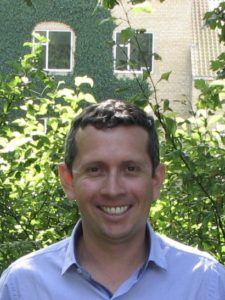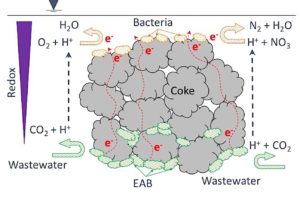Nationality: Colombian
Partner Institution: Aarhus University
Start and end of PhD project: 01.08.2015 – 31.07.2018
e-mail: c.a.ramirez@bios.au.dk
Supervisor: Prof. Hans Brix and Dr. Carlos Arias
PhD-title: Kinetics and Hydrodynamics of Microbial Electrochemical Technology-based Constructed Wetlands (METland) for Domestic Wastewater Treatment
Link to research group at Aarhus University
Description of research project:
Constructed Wetlands (CW) are biological engineering systems for wastewater treatment that rely on the interaction of physical, chemical and biological processes, and are characterized for being robust and cost-effective technology that require low operation and maintenance efforts. CW have been extensively investigated, demonstrating capacity to treat diverse pollutants such as domestic, industrial, runoff and agriculture effluents.
Among the different innovations in CW design to enhance their performance for wastewater treatment, is included the combination with Microbial Electrochemical Technologies (MET) like Microbial Fuel Cells (MFC). MET are set-ups designed to mimic bacterial exchange of metabolic electrons with insoluble electron donors and acceptors (e.g. solid state electrode) through an electrical circuit.
MET relies on the action of electroactive bacteria – EAB, which can conserve energy from electron transfer to electrodes. EAB act as catalysts for organic matter oxidation, which after consuming energy for biomass growth, release and transfer electrons, either to a conductive matrix or through an external circuit. The CW-MFC combination dates back to year 2012, and their implementation as a suitable real scale wastewater treatment alternative is still in development.
Based on the naturally occurring redox gradients in CW, an innovative concept has been proposed by using electro-conductive biofilters instead of external circuits like in MFC, resulting in the development of a Microbial Electrochemical-based Constructed Wetland (METland). In this, EAB are stimulated to generate and transfer electrons to an electro-conductive material that acts as unlimited acceptor, maximizing substrate consumption (Figure 1).
Since the METland concept is still in development, uncertainties exist regarding the dynamics involve in the removal of pollutants and performance along time. Therefore, the aim of this research is to characterize the hydrodynamics and kinetics involved in the removal of organic matter, nutrients and other compounds of interest in a METland system.



